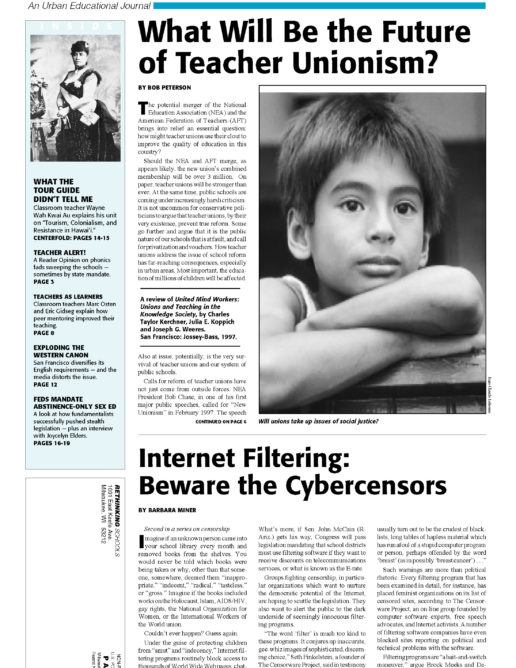Preview of Article:
NEA-AFT Unity
A Rethinking Schools Editorial
Such a merger could be an enormous step forward. Most important, it will provide a valuable opportunity to rethink the purposes and goals of teacher unionism.
The merger vote will be taken in July at the conventions of the 2.4 million-member National Education Association (NEA) and the 950,000-member American Federation of Teachers (AFT). One clear advantage of merger is the increased strength brought by greater numbers and resources. A new organization also has the potential to combine the best features of the two existing unions. For example, the AFT has demonstrated an openness to take risks with potentially valuable innovations such as career ladders and peer review programs. The NEA has been sensitive to representation from people of color and has played an important role in promoting progressive social legislation at the national level.
There are dangers as well. Both the NEA and AFT have historically shared two weaknesses:
- A failure to consistently promote educational equality for all children, particularly children of color. </p

